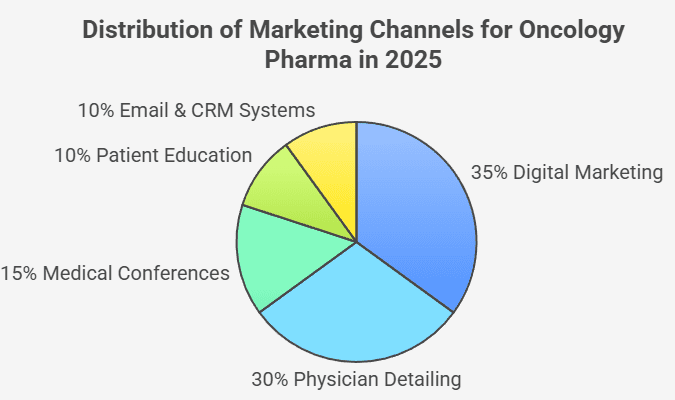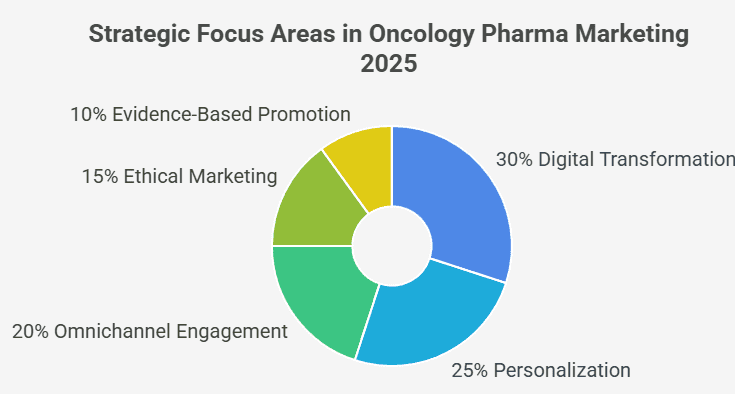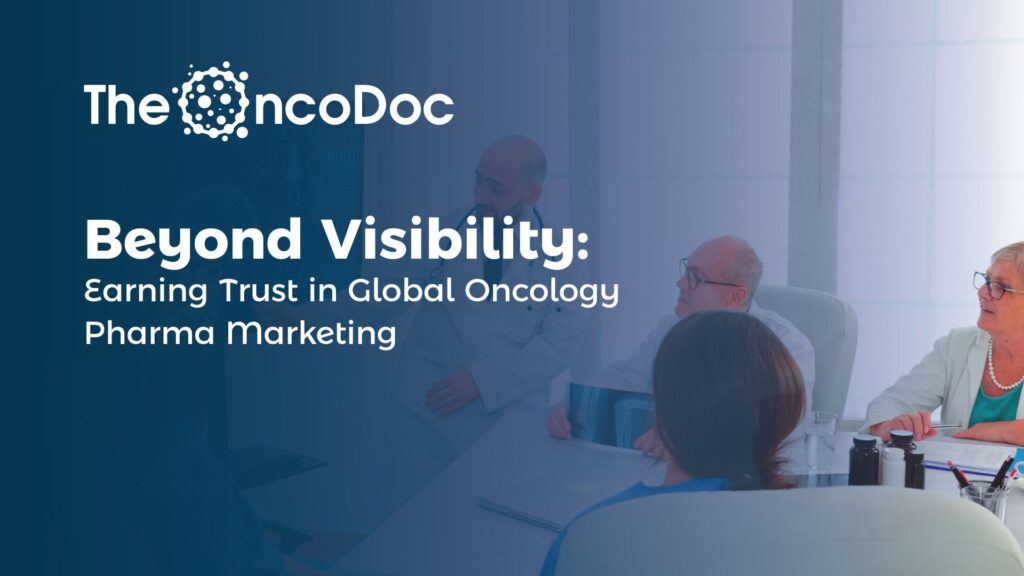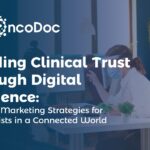Introduction: The New Era of Oncology Marketing
Pharmaceutical marketing for oncologists has entered a transformative phase in 2025, shaped by the dual imperatives of scientific credibility and digital engagement. The oncology landscape is uniquely complex: every prescription is a high-stakes decision rooted in trust, evidence, and clinical context. For pharma marketers, the challenge is not just to gain visibility, but to deliver genuine value that supports oncologists in delivering optimal patient care1.
Traditional marketing metrics—impressions, reach, and clicks—are no longer sufficient. Oncologists, inundated by a flood of digital touchpoints, now demand clinically relevant, time-saving, and evidence-based resources. The future of pharma marketing in oncology lies in building partnerships, not just promoting products1.
Why Traditional Visibility Metrics Fall Short in Oncology
Oncologists are exposed to thousands of digital messages daily—emails, webinars, social media posts, and more. Yet, few of these interactions earn their attention or trust. The reason: classic digital metrics like click-through rates and cost per mille do not measure clinical relevance or address the nuanced needs of cancer care1.
Key shortcomings of traditional metrics in oncology marketing:
- They do not assess whether content is clinically useful.
- They ignore the emotional and ethical complexities of cancer care.
- They often prioritize brand goals over the real needs of healthcare providers1.
“In cancer care, an ad that offers clarity, a guide, or a tool is remembered longer than the one that just announces a brand.”
— Dr. Ankur Jaiswal, Hemato-Oncologist, Lucknow1
What Oncologists Value in Pharma Marketing
To move beyond noise, pharma marketers must redefine success: from “How many saw us?” to “How many did we help?” Oncologists value digital assets that:
- Simplify clinical decision-making.
- Save time during patient consultations.
- Support evidence-based treatment planning.
- Enable patient education and adherence.
- Address real-world challenges, such as side effect management and comorbidities1.
Building Value: Practical Strategies for Pharma Marketers
1. Clinical Utility in Every Digital Asset
Oncologists need more than product information—they need tools that help them decide when and how to use a therapy. Effective digital resources include:
- Interactive treatment algorithms.
- Side effect management guides tailored to patient types.
- Tumor board-ready slide decks for decision dilemmas.
- Switching protocols for biosimilars and generics.
- Clinical calculators for dosage personalization1.
Delivering these resources via mobile-friendly portals or apps ensures they are accessible during clinic hours, even between patients.
2. Real-World Evidence, Not Just Trial Data
Randomized controlled trials (RCTs) are essential, but oncologists also seek real-world data reflecting diverse patient populations and settings. Valuable formats include:
- Case series co-authored with local key opinion leaders (KOLs).
- Infographics comparing real-world and trial outcomes.
- Interactive dashboards segmented by region, tumor type, or treatment line.
- Expert panel recordings discussing practical treatment gaps1.
3. Respecting Oncologists’ Time: Micro-Content with Macro-Value
Oncologists are time-starved. Bite-sized, high-value content is preferred:
- 60-second videos on dosage titration or safety updates.
- Two-page quick-reference guides on therapy sequencing.
- Chatbot summaries of new guidelines.
- Infographic summaries of meta-analyses or head-to-head studies1.
Channel Matching:
- Email for in-depth toolkits.
- LinkedIn for thought-leader insights.
- WhatsApp/Telegram for rapid updates.
4. Supporting Patient Communication and Caregiver Needs
Pharma marketing can bridge the gap between clinical knowledge and patient understanding by providing:
- Explainer videos for patients (e.g., immunotherapy, targeted therapy).
- Multilingual consent templates.
- Printable chemotherapy preparedness checklists.
- Emotional support content for caregivers1.
These assets, shared via QR codes or messaging apps, ease the physician’s workload and improve the patient journey.
5. Building Trust through Transparency and Personalization
Credibility is everything in oncology. Marketers must:
- Share clear mechanisms of action and side effect disclosures.
- Include local regulatory approval status.
- Personalize content by sub-specialty (breast, lung, hematologic).
- Feature real clinicians in testimonial campaigns.
- Avoid over-polished, generic messaging1.
6. Integrating Field Reps and Medical Science Liaisons (MSLs) with Digital Tools
Digital marketing should enhance—not replace—field efforts:
- Reps use digital engagement data (e.g., toolkit downloads) to personalize outreach.
- MSLs respond to scientific questions raised via digital touchpoints.
- Regional content engagement informs in-clinic detailing priorities1.
Integrating CRM and marketing automation enables closed-loop feedback between digital and field teams.
7. Measuring What Matters: Value-Based KPIs
Move beyond reach and impressions. Track metrics that reflect impact:
- Frequency of tool use (repeat visits to decision aids).
- Average time spent on educational content.
- Number of post-engagement rep meetings.
- Peer-sharing activity (content forwarded).
- Sentiment analysis from short surveys (“Did this help your practice?”)1.
The Digital Transformation of Oncology Pharma Marketing
Digital transformation is now the cornerstone of oncology marketing. The integration of omnichannel strategies—combining in-person visits, virtual platforms, and digital tools—provides a cohesive experience that meets the evolving needs of oncologists.
Key elements of digital transformation:
- Personalized communication (e-detailing, webinars, newsletters).
- Omnichannel engagement (face-to-face, video calls, email, social media).
- Data-driven segmentation and tailored messaging.
- Ethical marketing and compliance with regulations (e.g., UCPMP 2024 in India).

Bar chart showing the distribution of marketing budget components for pharma marketing in 2025
Pharma companies are increasingly allocating their marketing budgets toward digital initiatives and physician engagement, with a significant emphasis on digital marketing, physician detailing, and patient education.
This bar chart illustrates the percentage allocation of marketing budgets across different components in pharma marketing for the year 2025, highlighting the emphasis on digital marketing and physician detailing.
Distribution of Marketing Channels in Oncology (2025)

Pie chart showing the percentage share of pharma marketing channels in oncology marketing in 2025
Modern pharma marketing employs a mix of traditional and digital channels. In oncology, the most effective channels include physician detailing, digital marketing, medical conferences, webinars, and patient education campaigns.
This pie chart represents the distribution of marketing channels used in oncology pharma marketing in 2025, emphasizing the dominance of digital marketing and physician detailing.
Emphasis on Marketing Strategies in Oncology (2025)
Pie chart showing the distribution of pharma marketing strategies in oncology for 2025
Pharma marketing strategies in oncology now prioritize digital transformation, personalization, and omnichannel engagement, alongside evidence-based promotion and ethical marketing.
This pie chart illustrates the relative emphasis on different pharma marketing strategies in oncology for 2025, highlighting the importance of digital transformation and personalization.
Mini Case Study: Value-Centered Digital Campaign for Immunotherapy
Brand Goal: Increase awareness and uptake of a new immunotherapy for Stage III NSCLC.
Digital Strategy:
- Launched a clinical decision tool: “Is your patient ready for immunotherapy?”
- Ran a Telegram-based tumor board series with regional KOLs.
- Created a patient-facing explainer in five regional languages.
- Equipped field reps with “Top 10 Questions Asked” discussion decks.
Results:
- 45% of oncologists used the decision tool more than three times per month.
- 68% shared the patient explainer with at least five patients.
- Reps reported 35% shorter sales cycles in digital-first clinics1.
This initiative not only improved awareness but also enabled better care and clinical confidence.
Conclusion: Serving the Practice, Not Just the Brand
Pharma marketing to oncologists must reflect the gravity of cancer care. The future belongs to brands that:
- Support clinical practice.
- Respect oncologists’ time and expertise.
- Strengthen treatment decisions with credible, relevant resources.
By shifting from promotion to partnership, pharma companies can make a lasting impact in oncology—improving both patient outcomes and brand loyalty.
The Oncodoc team is a group of passionate healthcare and marketing professionals dedicated to delivering accurate, engaging, and impactful content. With expertise across medical research, digital strategy, and clinical communication, the team focuses on empowering healthcare professionals and patients alike. Through evidence-based insights and innovative storytelling, Hidoc aims to bridge the gap between medicine and digital engagement, promoting wellness and informed decision-making.



